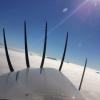Turbo Charger Cool Down
-
Members Online
- christaylor302
- OneSaltyItalian
- slowflyin
- Utah20Gflyer
- hobbit64
- hubcap
- CL605
- EricJ
- M20E for me
- Skyland
- 201er
- Ragsf15e
- Justin Schmidt
- takair
- M20S Driver
- Aerodon
- Jchappe7
- BeachLifeMoon
- Gregarious
- BrentS
- pirate
- Schllc
- Marc_B
- Noreaster
- milotron
- GeeBee
- 1967 427
- alexz
- Jetpilot86
- Jer
- Paul Thomas
- Ed de C.
- Ron McBride


Recommended Posts
Join the conversation
You can post now and register later. If you have an account, sign in now to post with your account.